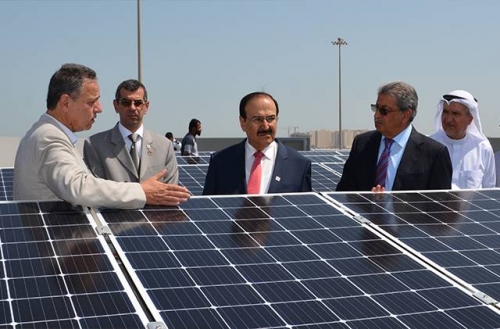Bahrain stands fifth in green energy increase
TDT | Manama
The Daily Tribune – www.newsofbahrain.com
Staff Reporter
A new study has revealed that Bahrain has seen the fifth-greatest increase in renewable capacity since 2011. Bahrain’s use of renewable energy has grown by 900 per cent during the past ten years.
The study by Compare the Market Australia analysed each developed country’s renewable energy capacity between 2011 and 2020, to reveal the countries with the greatest overall increases.
The nation that has seen its use of renewable energy increases the most in the United Arab Emirates, where renewable capacity has grown by almost 20,000 per cent over the last decade. The UAE has traditionally relied on its plentiful supplies of oil but has recently made a big effort to shift away from fossil fuels, although just 7.2pc of the country’s energy needs are met by renewable means.
Saudi Arabia ranks second, another country that has had a strong reliance on oil for its energy needs. Saudi Arabia however has been pushing towards more renewable alternatives with an increase of over 13,000pc in the last ten years.
The Caribbean country of Barbados comes in third place, having increased its renewable energy capacity by 4,900pc. Barbados is followed by Malta in fourth place, which saw a rise of 2,262.5 per cent.
The Kingdom, whose use of renewable energy has grown by 900 per cent during the past ten years, is in fifth place on the list. Norway tops the list of countries relying on green energy the most.
“Looking specifically at the countries where renewable energy makes up the greatest share of total electricity capacity, Norway comes out on top with 97.4pc,” the study says.
“The country produced 33,003 MW of hydroelectric power in 2020, but also makes use of wind, solar, and bioenergy too.” Dr Khaled Fahad Alalawi, Assistant Undersecretary of Industrial Development within the Ministry of Industry, Commerce and Tourism, was earlier quoted by The Daily Tribune, urging the Kingdom’s industrial sector to take the green route.
“One of the primary pillars of the industrial plan 2022-2026 is to support the sector’s transformation to Industry 4.0, as well as the implementation of the concept of the circular economy along with environmental and social governance.
“This strategy focuses on a variety of industries that offer opportunities for growth and prosperity, particularly manufacturing in the aluminium and petrochemical sectors, as well as clean industries such as renewable energy, green and blue hydrogen, which will help the Kingdom achieve its objective of Net-Zero Carbon by 2060.”
The Ministry of Industry, Commerce, and Tourism, in collaboration with other stakeholders, is encouraging industrial companies to adopt environmentally friendly technology as one of the best methodologies in the industrial sector and a tool to reduce costs and increase competitiveness, as well as to ensure the efficiency of resource use, particularly water and energy.
The industrial sector has a role to play in the gradual transition to a green economy focused on sustainable growth.” The Sustainable Energy Authority (SEA) has already unveiled a plan to establish a green hydrogen plant.
Earlier in January this year, Sustainable Energy Authority (SEA) President Dr Abdulhussein Mirza discussed the project with a high-level delegation from Al Judy Company, led by Chairman Ibrahim Ali.
Dr Mirza outlined the SEA initiatives and projects for 2022, including a plan to benefit from the green hydrogen. The delegation gave an overview of its plan to establish a 4-Megawatt plant for the production of green hydrogen – a first in the Arabian Gulf region.
The company which holds a patent registered in Germany has also been conferred the gold medal for best invention, according to SEA. The factory will be established according to the highest level of international standards in the construction and operational stage. The project will be built in its first phase on land with a total area of 20,000 square metres and an estimated cost of $150 million.
Related Posts

